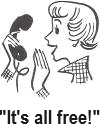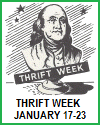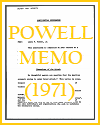| The Election of 1996 and the Political Aftermath Reading with Questions |
|---|
| www.studenthandouts.com ↣ American History ↣ American History Readings with Questions |
 President Clinton undertook his campaign for re-election in 1996 under the most favorable of circumstances. If not an imposing personality in the manner of a Roosevelt, he was a natural campaigner, whom many felt had an infectious charm. He presided over a growing economic recovery. He had positioned himself on the political spectrum in a way that made him appear a man of the center leaning left. His Republican opponent, Senator Robert Dole of Kansas, Republican leader in the upper house, was a formidable legislator but less successful as a presidential candidate.
President Clinton undertook his campaign for re-election in 1996 under the most favorable of circumstances. If not an imposing personality in the manner of a Roosevelt, he was a natural campaigner, whom many felt had an infectious charm. He presided over a growing economic recovery. He had positioned himself on the political spectrum in a way that made him appear a man of the center leaning left. His Republican opponent, Senator Robert Dole of Kansas, Republican leader in the upper house, was a formidable legislator but less successful as a presidential candidate.
Clinton, promising to "build a bridge to the 21st century," easily defeated Dole in a three-party race, 49.2 percent to 40.7 percent, with 8.4 percent to Ross Perot. He thus became the second American president to win two consecutive elections with less than a majority of the total vote. (The other was Woodrow Wilson in 1912 and 1916.) The Republicans, however, retained control of both the House of Representatives and the Senate. Clinton never stated much of a domestic program for his second term. The highlight of its first year was an accord with Congress designed to balance the budget, further reinforcing the president's standing as a fiscally responsible moderate liberal. In 1998, American politics entered a period of turmoil with the revelation that Clinton had carried on an affair inside the White House with a young intern. At first the president denied this, telling the American people: "I did not have sexual relations with that woman." The president had faced similar charges in the past. In a sexual harassment lawsuit filed by a woman he had known in Arkansas, Clinton denied under oath the White House affair. This fit most Americans' definition of perjury. In October 1998, the House of Representatives began impeachment hearings, focusing on charges of perjury and obstruction of justice. Whatever the merits of that approach, a majority of Americans seemed to view the matter as a private one to be sorted out with one's family, a significant shift in public attitude. Also significantly, Hillary Clinton continued to support her husband. It surely helped also that the times were good. In the midst of the House impeachment debate, the president announced the largest budget surplus in 30 years. Public opinion polls showed Clinton's approval rating to be the highest of his six years in office. That November, the Republicans took further losses in the midterm congressional elections, cutting their majorities to razor-thin margins. House Speaker Newt Gingrich resigned, and the party attempted to develop a less strident image. Nevertheless, in December the House voted the first impeachment resolution against a sitting president since Andrew Johnson (1868), thereby handing the case to the Senate for a trial. Clinton's impeachment trial, presided over by the Chief Justice of the United States, held little suspense. In the midst of it, the president delivered his annual State of the Union address to Congress. He never testified, and no serious observer expected that any of the several charges against him would win the two-thirds vote required for removal from office. In the end, none got even a simple majority. On February 12, 1999, Clinton was acquitted of all charges. Click here to print. Answer Key: (1) C - Robert Dole; (2) A - True; (3) Answers will vary; (4) 49.2%; (5) February 12, 1999. |
 |  |  |  |  |  |
| UNIT I: | Early America | UNIT IX: | Discontent and Reform | ||
| UNIT II: | Colonial Period | UNIT X: | War, Prosperity, and Depression | ||
| UNIT III: | American Revolution | UNIT XI: | New Deal and World War II | ||
| UNIT IV: | New National Government | UNIT XII: | Postwar America | ||
| UNIT V: | Westward Expansion | UNIT XIII: | Decades of Change | ||
| UNIT VI: | Sectional Conflict | UNIT XIV: | New Conservatism | ||
| UNIT VII: | Civil War and Reconstruction | UNIT XV: | Into the Twenty-first Century | ||
| UNIT VIII: | Growth and Transformation | UNIT XVI: | Polarization and Deglobalization |
| www.studenthandouts.com ↣ American History ↣ American History Readings with Questions |








